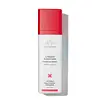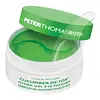What's inside
What's inside
 Key Ingredients
Key Ingredients

 Benefits
Benefits

 Concerns
Concerns

 Ingredients Side-by-side
Ingredients Side-by-side

Water
Skin ConditioningGlycerin
HumectantCoco-Caprylate
EmollientStearic Acid
CleansingCoconut Alkanes
EmollientGlyceryl Stearate
EmollientNiacinamide
SmoothingCaprylic/Capric Triglyceride
MaskingCetearyl Alcohol
EmollientPentylene Glycol
Skin ConditioningPassiflora Edulis Seed Oil
EmollientRetinol
Skin ConditioningSimmondsia Chinensis Seed Oil
EmollientSclerocarya Birrea Seed Oil
HumectantPrunus Armeniaca Kernel Oil
MaskingCetyl Ethylhexanoate
EmollientPalmitoyl Tripeptide-1
Skin ConditioningPalmitoyl Tetrapeptide-7
Skin ConditioningBrassica Oleracea Acephala Leaf Extract
HumectantBrassica Oleracea Italica Extract
AstringentTetrahexyldecyl Ascorbate
AntioxidantChrysin
Skin ConditioningPersea Gratissima Oil
Skin ConditioningLinoleic Acid
CleansingLinolenic Acid
CleansingCeramide NP
Skin ConditioningXanthophylls
Skin ConditioningPhytosphingosine
Skin ConditioningPhytosterols
Skin ConditioningJojoba Esters
EmollientPhysalis Pubescens Fruit Juice
Skin ConditioningStearyl Glycyrrhetinate
Skin ConditioningOryza Sativa Extract
AbsorbentGlycine Soja Oil
EmollientCarthamus Tinctorius Seed Oil
MaskingPalmitoyl Hexapeptide-12
Skin ConditioningCetyl Palmitate
EmollientTrehalose
HumectantLauric Acid
CleansingSodium Hyaluronate Crosspolymer
HumectantOlea Europaea Fruit Oil
MaskingGlucosamine Hcl
Tocopheryl Acetate
AntioxidantCoco-Caprylate/Caprate
EmollientPisum Sativum Extract
Skin ConditioningTocopherol
AntioxidantBambusa Vulgaris Leaf/Stem Extract
HumectantPhenoxyethanol
PreservativeCaprylyl Glycol
EmollientCarbomer
Emulsion StabilisingTrideceth-6 Phosphate
EmulsifyingN-Hydroxysuccinimide
Skin ConditioningCeteareth-20
CleansingSodium Hydroxide
BufferingLaureth-23
CleansingSteareth-20
CleansingPropanediol
SolventChlorhexidine Digluconate
AntimicrobialPolysorbate 20
EmulsifyingTrisodium Ethylenediamine Disuccinate
Chlorphenesin
AntimicrobialPotassium Sorbate
PreservativeEthylhexylglycerin
Skin ConditioningWater, Glycerin, Coco-Caprylate, Stearic Acid, Coconut Alkanes, Glyceryl Stearate, Niacinamide, Caprylic/Capric Triglyceride, Cetearyl Alcohol, Pentylene Glycol, Passiflora Edulis Seed Oil, Retinol, Simmondsia Chinensis Seed Oil, Sclerocarya Birrea Seed Oil, Prunus Armeniaca Kernel Oil, Cetyl Ethylhexanoate, Palmitoyl Tripeptide-1, Palmitoyl Tetrapeptide-7, Brassica Oleracea Acephala Leaf Extract, Brassica Oleracea Italica Extract, Tetrahexyldecyl Ascorbate, Chrysin, Persea Gratissima Oil, Linoleic Acid, Linolenic Acid, Ceramide NP, Xanthophylls, Phytosphingosine, Phytosterols, Jojoba Esters, Physalis Pubescens Fruit Juice, Stearyl Glycyrrhetinate, Oryza Sativa Extract, Glycine Soja Oil, Carthamus Tinctorius Seed Oil, Palmitoyl Hexapeptide-12, Cetyl Palmitate, Trehalose, Lauric Acid, Sodium Hyaluronate Crosspolymer, Olea Europaea Fruit Oil, Glucosamine Hcl, Tocopheryl Acetate, Coco-Caprylate/Caprate, Pisum Sativum Extract, Tocopherol, Bambusa Vulgaris Leaf/Stem Extract, Phenoxyethanol, Caprylyl Glycol, Carbomer, Trideceth-6 Phosphate, N-Hydroxysuccinimide, Ceteareth-20, Sodium Hydroxide, Laureth-23, Steareth-20, Propanediol, Chlorhexidine Digluconate, Polysorbate 20, Trisodium Ethylenediamine Disuccinate, Chlorphenesin, Potassium Sorbate, Ethylhexylglycerin
Water
Skin ConditioningGlycerin
HumectantCarrageenan
Dipropylene Glycol
HumectantCeratonia Siliqua Gum
EmollientCucumis Sativus Fruit Extract
EmollientAloe Barbadensis Leaf Juice Powder
Skin ConditioningCaffeine
Skin ConditioningArnica Montana Flower Extract
MaskingSodium Hyaluronate
HumectantHydrolyzed Collagen
EmollientChamomilla Recutita Flower Extract
MaskingCamellia Sinensis Leaf Extract
AntimicrobialTocopheryl Acetate
AntioxidantNiacinamide
SmoothingAdenosine
Skin ConditioningAllantoin
Skin ConditioningMaltodextrin
AbsorbentEthylhexylglycerin
Skin ConditioningButylene Glycol
HumectantCalcium Lactate
AstringentRicinus Communis Seed Oil
MaskingXanthan Gum
EmulsifyingDextrin
AbsorbentPotassium Chloride
Disodium EDTA
PEG-60 Hydrogenated Castor Oil
EmulsifyingChlorphenesin
AntimicrobialPhenoxyethanol
PreservativeMica
Cosmetic ColorantParfum
MaskingCI 19140
Cosmetic ColorantCI 42090
Cosmetic ColorantWater, Glycerin, Carrageenan, Dipropylene Glycol, Ceratonia Siliqua Gum, Cucumis Sativus Fruit Extract, Aloe Barbadensis Leaf Juice Powder, Caffeine, Arnica Montana Flower Extract, Sodium Hyaluronate, Hydrolyzed Collagen, Chamomilla Recutita Flower Extract, Camellia Sinensis Leaf Extract, Tocopheryl Acetate, Niacinamide, Adenosine, Allantoin, Maltodextrin, Ethylhexylglycerin, Butylene Glycol, Calcium Lactate, Ricinus Communis Seed Oil, Xanthan Gum, Dextrin, Potassium Chloride, Disodium EDTA, PEG-60 Hydrogenated Castor Oil, Chlorphenesin, Phenoxyethanol, Mica, Parfum, CI 19140, CI 42090
 Reviews
Reviews

Ingredients Explained
These ingredients are found in both products.
Ingredients higher up in an ingredient list are typically present in a larger amount.
Chlorphenesin is a synthetic preservative. It helps protect a product against bacteria in order to extend shelf life. In most cases, Chlorphenesin is paired with other preservatives such as phenoxyethanol and caprylyl glycol.
Chlorphenesin is a biocide. This means it is able to help fight the microorganisms on our skin. It is also able to fight odor-releasing bacteria.
Chlorphenesin is soluble in both water and glycerin.
Studies show Chlorphenesin is easily absorbed by our skin. You should speak with a skincare professional if you have concerns about using Chlorphenesin.
Learn more about ChlorphenesinEthylhexylglycerin (we can't pronounce this either) is commonly used as a preservative and skin softener. It is derived from glyceryl.
You might see Ethylhexylglycerin often paired with other preservatives such as phenoxyethanol. Ethylhexylglycerin has been found to increase the effectiveness of these other preservatives.
Glycerin is already naturally found in your skin. It helps moisturize and protect your skin.
A study from 2016 found glycerin to be more effective as a humectant than AHAs and hyaluronic acid.
As a humectant, it helps the skin stay hydrated by pulling moisture to your skin. The low molecular weight of glycerin allows it to pull moisture into the deeper layers of your skin.
Hydrated skin improves your skin barrier; Your skin barrier helps protect against irritants and bacteria.
Glycerin has also been found to have antimicrobial and antiviral properties. Due to these properties, glycerin is often used in wound and burn treatments.
In cosmetics, glycerin is usually derived from plants such as soybean or palm. However, it can also be sourced from animals, such as tallow or animal fat.
This ingredient is organic, colorless, odorless, and non-toxic.
Glycerin is the name for this ingredient in American English. British English uses Glycerol/Glycerine.
Learn more about GlycerinNiacinamide is a multitasking form of vitamin B3 that strengthens the skin barrier, reduces pores and dark spots, regulates oil, and improves signs of aging.
And the best part? It's gentle and well-tolerated by most skin types, including sensitive and reactive skin.
You might have heard of "niacin flush", or the reddening of skin that causes itchiness. Niacinamide has not been found to cause this.
In very rare cases, some individuals may not be able to tolerate niacinamide at all or experience an allergic reaction to it.
If you are experiencing flaking, irritation, and dryness with this ingredient, be sure to double check all your products as this ingredient can be found in all categories of skincare.
When incorporating niacinamide into your routine, look out for concentration amounts. Typically, 5% niacinamide provides benefits such as fading dark spots. However, if you have sensitive skin, it is better to begin with a smaller concentration.
When you apply niacinamide to your skin, your body converts it into nicotinamide adenine dinucleotide (NAD). NAD is an essential coenzyme that is already found in your cells as "fuel" and powers countless biological processes.
In your skin, NAD helps repair cell damage, produce new healthy cells, support collagen production, strengthen the skin barrier, and fight environmental stressors (like UV and pollution).
Our natural NAD levels start to decline with age, leading to slower skin repair, visible aging, and a weaker skin barrier. By providing your skin niacinamide, you're recharging your skin's NAD levels. This leads to stronger, healthier, and younger looking skin.
Another name for vitamin B3 is nicotinamide. This vitamin is water-soluble and our bodies don't store it. We obtain Vitamin B3 from either food or skincare. Meat, fish, wheat, yeast, and leafy greens contain vitamin B3.
The type of niacinamide used in skincare is synthetically created.
Learn more about NiacinamidePhenoxyethanol is a preservative that has germicide, antimicrobial, and aromatic properties. Studies show that phenoxyethanol can prevent microbial growth. By itself, it has a scent that is similar to that of a rose.
It's often used in formulations along with Caprylyl Glycol to preserve the shelf life of products.
Tocopheryl Acetate is AKA Vitamin E. It is an antioxidant and protects your skin from free radicals. Free radicals damage the skin by breaking down collagen.
One study found using Tocopheryl Acetate with Vitamin C decreased the number of sunburned cells.
Tocopheryl Acetate is commonly found in both skincare and dietary supplements.
Learn more about Tocopheryl AcetateWater. It's the most common cosmetic ingredient of all. You'll usually see it at the top of ingredient lists, meaning that it makes up the largest part of the product.
So why is it so popular? Water most often acts as a solvent - this means that it helps dissolve other ingredients into the formulation.
You'll also recognize water as that liquid we all need to stay alive. If you see this, drink a glass of water. Stay hydrated!
Learn more about Water